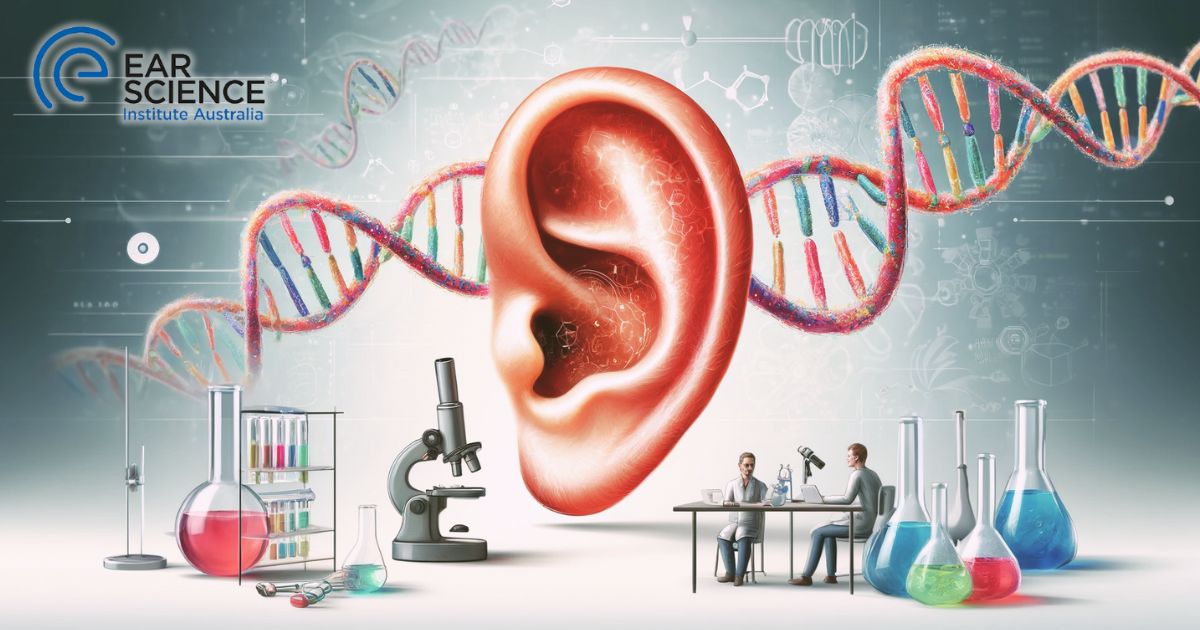Ear Science Institute Australia has secured Future Health Research & Innovation (FHRI) funding to establish a Western Australia-headquartered Australasian biobank, aimed at advancing genetic therapies for childhood and adult hearing loss.
The Australasian Hearing Registry and Biobank (AHRB) will be the first in Australia to store tissue related to genetic-associated hearing loss, with the goal of advancing personalized care and developing novel treatments. Hearing loss affects one in six Australians, with genetic disorders accounting for around 50% of these cases, significantly impacting quality of life. Recent breakthroughs in gene therapies have shown promising potential for new treatments, prompting Ear Science Institute Australia to propose the creation of the WA-based biobank.
The biobank will facilitate increased access to genetic samples by linking to national and international registries through a network of clinicians, researchers, institutes, and patients. This will enhance research capacity, leading to better understanding of genetic causes of hearing loss and assisting in the development of treatments.
Recent gene therapy trials have shown life-changing results for children who previously could not hear, and it is anticipated that the biobank will catalyze similar research in Australia.
The Role of Biobanks
A biobank is a facility that stores and manages biological samples donated by individuals for use in research, diagnostics, and treatment. These samples are typically linked to medical records or lifestyle information, providing researchers with comprehensive datasets for studying diseases, genetics, and other aspects of human health and biology.
Biobanks play a crucial role in advancing medical research, personalized medicine, and drug development by giving researchers access to large-scale, well-characterized collections of biological materials.
Leadership and Collaboration
Commenting on the project, Ear Science CEO Adjunct Associate Professor Sandra Bellekom said, “Ear Science is proud to lead Australia with the first hereditary hearing loss biobank for the nation. The bringing together of researchers, hospitals, clinics, and the community is what Ear Science is known for.”
“Thanks to a $500,000 grant from the WA Government’s Future Health Research and Innovation (FHRI) Fund, we can truly tackle the cause and treatment of genetic hearing loss experienced by over 12 million children and adults worldwide.”
–Sandra Bellekom, ESIA CEO
This $1 million project is a collaborative initiative, spearheaded by Ear Science Founder Professor Marcus Atlas, with contributions from Associate Professor Fred Chen and Dr. Samuel McLenachan at Lions Eye Institute, Dr. Stephen Rodrigues at Perth Children’s Hospital, and Professor Nicholas Pachter at WA Health, along with other partners in Western Australia and collaborators across other states.
Adjunct Associate Professor Elaine Wong, Head of Hearing Therapeutic at Ear Science Institute Australia, stated, “Pioneering gene therapy could restore hearing in patients with profound genetic hearing loss. The approach could help researchers develop therapies for other types of inherited hearing loss. About 155 genes have been identified to be associated with hearing loss, and two-thirds of childhood hearing loss has a genetic cause.”
Dr. Samuel McLenachan, Senior Scientist in the Ocular Tissue Engineering Laboratory at Lions Eye Institute, added, “This project leverages the strong collaboration between LEI and Ear Science, including the knowledge and experience of LEI’s WA Retinal Degeneration Study Biobank.”
Ear Science Institute Australia applauds the dedication of the WA Department of Health and the Office of Medical Research and Innovation for making WA a state of innovation in support of this research.
About ESIA
Ear Science is a world-renowned, for-purpose organisation and centre of excellence that aligns multi-disciplinary teams from research, audiology, and clinical operations to develop innovative treatments for ear and hearing disorders, and eventually find a cure for hearing loss
Source: Ear Science Institute Australia







